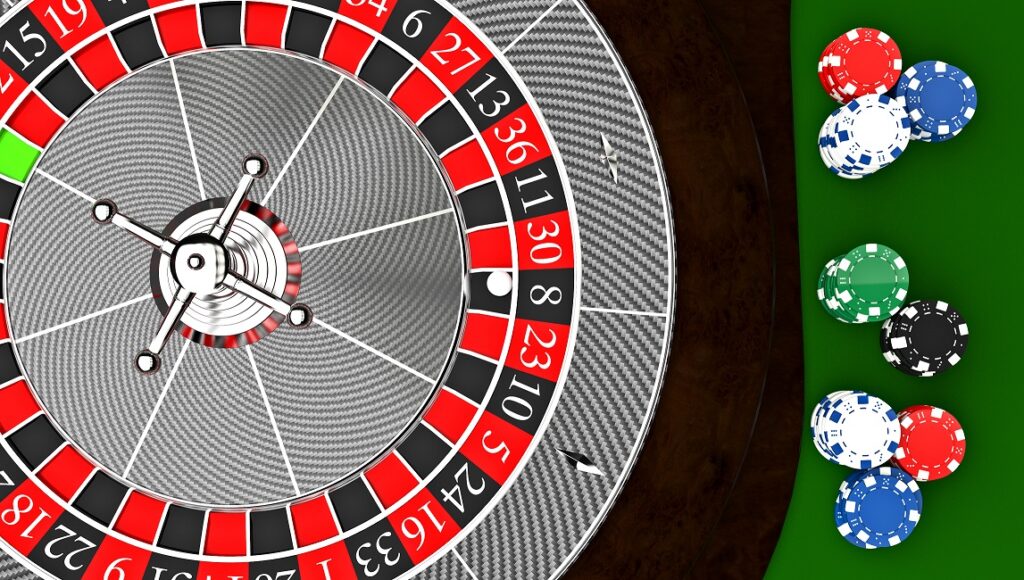How to Calculate Roulette Probabilities
The creators of all the famous games of chance must have been math lovers because they are all strongly influenced by probability calculations. Therefore, you should consider that if you want to increase your winnings, or you will be highly disappointed! After all, it is about risking your funds and raising the probability of winning extra money. Generally, all the games of chance have their house edge, which is, in the long run, the casino’s superiority over a gambler. In the vast majority of the games, including slots, the average house edge varies between 1% and 10%. When it comes to European Roulette, it’s 2.7%, while in the case of American Roulette it reaches 5.26%.
You should keep in mind that there is a vast difference between winning at the casino and beating it. Even if you get a decent win, it does not mean you have beaten the casino with it. The overall of the losses and gains at every roulette wheel eventually evens out to 5,26%. Many people appreciate the fact that you can play a roulette game without any knowledge associated with it. It can work out for like an hour, but finally, you will probably need to know precisely what is it about. However, nobody wants to do serious maths every time when they come to a casino since it should be fun, not exhausting. Therefore, we are here to help you out and explain how to remember where the most significant odds are.
How is Probability Counted Anyway?
As a branch of mathematics, probability tackles with numerical descriptions of how probable an event is to happen or how likely is it for a suggestion to be true. Probability lands somewhere between 0 and 1, where 0 means impossibility and 1 stands for certainty. Therefore, the bigger the number of an event’s probability, the more likely it is that it will take place. The most straightforward example to explain this is the tossing of an unbiased coin. There are only two possible outcomes – “heads” and “tails”. They are both equally likely to happen, so the probability of “tails” is exactly the same as the probability of “tails”. Hence, in either of the cases, the probability equals 1/2 (which is most often written as 50% or 0.5).
The Probability in Roulette
It is relatively easy to understand how to calculate roulette probabilities. In the European variant, there are numbers from 1 to 36. They are divided into three equal groups:
- 18 Pair numbers (even) and 18 Impair (odd)
- 18 Manque numbers (the lower half) and 18 Passe (the higher half)
- 18 Noir numbers (black) and 18 Rouge (red)
Apart from that, we have also a separate green zero slot, which results in 37 numbered zones overall. The zero does not belong to any of the three groups mentioned above.
Therefore, when you place your roulette bets on the chosen set, meaning:
- high or low
- even or odd
- black or red
your probability of winning equals 18/37, which stands for 48,65%. Provided that your bet is successful, you get your stake plus 100% of it. In other words, you make your funds double because every set is an “evens” bet.
If the frequency of outcomes is stable (meaning that every single number occurs once during all the 37 rotations), when the green zero appears, the casino will get all the bets placed on the three groups whenever the 37th round is reached. Hence, gamblers lose 1/37 (2.7%) of their stakes on average, provided that the stake is equal in every turn.

To put it differently, let’s assume you are betting on both the “red” and “black” groups in the same turn. Averagely, in 36/37 cases, the roulette wheel will stop at the number from 1 to 36. While backing each of the 36 numbers, you will lose one bet every time but gain complete compensation on the other, which results in a zero-sum game. Also, you will totally lose both of the bets if the roulette ball stops on the green zero, which happens in 1/37 of the rounds.
In other words, with a simple opportunity, you may await returns of 36/37 of your bets, and that gives the assumed value in roulette – 97.3%. Therefore, you will get back an average of just 97.3 units for every 100 units staked. However, one can find a casino that is a bit fairer to gamblers merely relying on chance. At such a roulette table, if you bet, for instance, black, and a zero arrives, you do not lose your stake at once. Instead, it is left to be used in the next spin in the roulette game.
Then, you will get back your stake (with no gains) if the next spin turns out to be “black”. In the case of this kind of house, the expectancy-value improves the player’s chances to 98.65% (to put it in order words – 98.65 units back for each 100 units stake). To wager with 100 units in a roulette game will take an average of 1.35 units, which is the house “edge”.
The only significant difference between the European roulette and the American one is the number of green slots – the latter has not only “0”, but also “00”. The probability can be counted in a very similar way, what you can see in this tutorial:
Odds and Payouts for Outside Bets
More careful players usually stick to the outside bets as in this case, the odds of winning are better. The most common ones are called “even money” as they cover more or less the half of the possible results, the only exception being the green zero (in American roulette, it is also the double zero). The even bets on a roulette table are as follows:
- even or odd
- 1-18 or 19-36
- black or red
In all of these cases, the probability of winning is near 50%. To be exact, “even money” bets reach the likelihood of being successful constituting 47.37% in the American Roulette and 48.65% in the European version. As the probability of these bets is high, you will get a 1:1 payout.
The next outside bets are Dozen and Column, both of them having 12 numbers on the board. It is just a third of all the likely results (a little less actually, because there are the zero and double zero spots). It is possible to bet on the first, second, or third dozens of the 36 numbers or one of the three columns. In the European Roulette, the winning odds for such bets equal 32.43%, while in the American variant – 31.58%. This kind of wager will provide you will more winnings as the payout for Dozen and Column counts 2:1.
Odds and Payouts for Inside Bets
Inside bets are those when you are choosing just a small group of numbers or even a single one. The ways of grouping the numbers can be diverse, but they are all associated with their positions on the board. Inside bets have much lower winning odds when compared to the outside ones, but they can provide you with much more beneficial payouts.
The types of inside bets are:
- Straight: betting on a specific number, with the lowest winning odds, but the highest payout 35:1. Chances: 2.63% (American) or 2.70% (European).
- Street: three-number bet, placed on a row of numbers. The payout: 11:1. Chances: 7.89% (American) or 8.11% (European)
- Double Street: logically, it is a bet on two rows of numbers. Payout: 5:1. Chances: 15.79% (American) or 16.22% (European).
- Split: betting on two numbers that are neighbouring each other on the table. Payout: 17:1. Chances: 5.26% (American) or 5.41% (European)
- Corner: four-number bet, forming a square on the board. Payout: 8:1. Chances: 10.53% (American) or 10.81% (European).
- Basket: placing your bet on five numbers, possible in American roulette only. It allows gamblers to bet on the zero, double zero, 1, 2, and 3. Payout: 6:1. Chances: 13.16%.
Will You Win if You Know How to Calculate Probability?
Unfortunately, it is not possible to grant you winnings with the help of probabilities. Roulette is a game of chance, and you can never know if it is going to be black or red, which number the ball will land on, etc. Nonetheless, it is definitely worth knowing which bets can increase your probability of being successful. Good luck!




